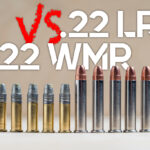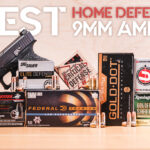

Not many shooters give a second thought to the diminutive .22 Short rimfire cartridge. It’s small, so small that it took us a week to find a couple of rounds that rolled off the shooting bench onto the floor. It’s a short-range, lightweight bullet. At first glance, it looks more like a suitable option for getting rid of mice than anything varmint-sized. However, there’s more to it than meets the eye. That’s why we’ll be discussing the best 22 Short ammo with you in this article.
Now you may have rolled your eyes at the mention of .22 Short in the past. But what if you were missing out on something interesting? Many shooters, including pros, know that 22 Short ammo is important to the shooting world. Our humble suggestion is that you should too. Don’t miss out on all the fun by ignoring this tiny little round.
Best .22 Short Ammo
There’s a good variety of .22 Short cartridges on the market. To make your search for quality ammo a little simpler, here are a few of our top picks. These are cartridges we’ve personally shot and can recommend as the best 22 Short ammo.
CCI CB .22 Short (LRN)
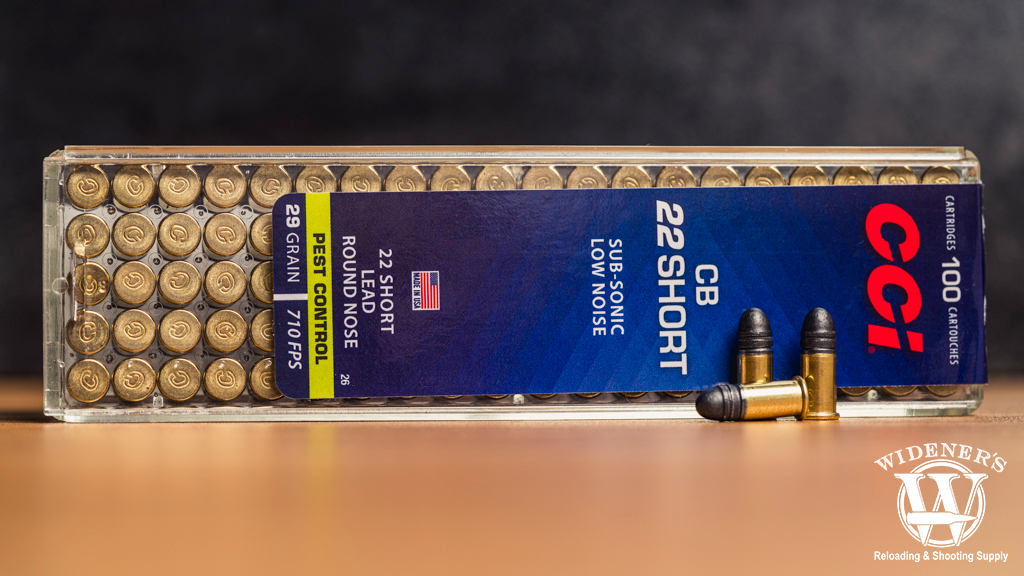
CCI CB .22 Short: The 29gr LRN option is a subsonic round that offers a less noisy shooting experience.
The CCI CB 22 Short 29 Grain is a low-noise, accurate round designed for target shooting and close-range pest control. It features a lead round-nose bullet with a grain weight of 29 and a muzzle velocity of 710 feet per second. Its ballistic coefficient is .080, and it provides an energy level that decreases from 32 foot-pounds at the muzzle to 24 foot-pounds at 100 yards. The trajectory of the bullet is optimized for close range, making it an excellent choice for quiet plinking and pest elimination without disturbing the surroundings.
| Caliber | Bullet Type | Bullet Weight | Velocity (Muzzle) | Energy (Muzzle) | 50 Yards (Velocity/Energy) | 75 Yards (Velocity/Energy) | 100 Yards (Velocity/Energy) |
|---|---|---|---|---|---|---|---|
| .22 Short | LRN | 29gr | 710 FPS | 32 FT LBS | 656 FPS/28 FT LBS | 631 FPS/26 FT LBS | 607 FPS/24 FT LBS |
CCI .22 Short (CPRN)

CCI .22 Short: The 29gr CPRN option features above-average accuracy and velocity for a short round.
The CCI Short CPRN 22 Short 29 Grain ammunition is designed for high performance in target shooting with a copper-plated round nose bullet that minimizes fouling. It offers a muzzle velocity of 1080 feet per second and a grain weight of 29. Its ballistic coefficient is .080, and the round provides consistent energy levels, reducing from 75 foot-pounds at the muzzle to 47 foot-pounds at 100 yards. Its accuracy and high velocity make it an ideal choice for precision shooting and plinking.
| Caliber | Bullet Type | Bullet Weight | Velocity (Muzzle) | Energy (Muzzle) | 50 Yards (Velocity/Energy) | 75 Yards (Velocity/Energy) | 100 Yards (Velocity/Energy) |
|---|---|---|---|---|---|---|---|
| .22 Short | CPRN | 29gr | 1,080 FPS | 75 FT LBS | 946 FPS/58 FT LBS | 899 FPS/52 FT LBS | 857 FPS/47 FT LBS |
Best 22 Short Ammo: CCI Hollow Point .22 Short (CPHP)

CCI Hollow Point .22 Short: The 27gr CPHP option is a perfect mix of stopping power and reliable expansion for hunting.
The CCI Hollow Point 22 Short 27 Grain ammunition is tailored for small game hunting and pest control, offering excellent stopping power and reliable expansion. It has a copper-plated hollow point bullet, a grain weight of 27, and a muzzle velocity of 1105 feet per second. With a ballistic coefficient of .080, it delivers energy levels from 73 foot-pounds at the muzzle down to 45 foot-pounds at 100 yards, ensuring effective performance over distance.
| Caliber | Bullet Type | Bullet Weight | Velocity (Muzzle) | Energy (Muzzle) | 50 Yards (Velocity/Energy) | 75 Yards (Velocity/Energy) | 100 Yards (Velocity/Energy) |
|---|---|---|---|---|---|---|---|
| .22 Short | CPHP | 27gr | 1,105 FPS | 73 FT LBS | 961 FPS/55 FT LBS | 911 FPS/50 FT LBS | 868 FPS/45 FT LBS |
Bullet Types & Uses
Although readily available as a caliber, the types of bullets available for the .22 Short are fairly limited. This is in part due to the small number of manufacturers of .22 Short ammunition. CCI is a prolific manufacturer of all rimfire calibers. The brand is generally the best option for finding different bullet types. However, other brand options exist in the market which are often worth taking a look at.
What you end up having at your disposal for .22 Short are basic options: lead round nose (LRN), copper-plated round nose (CPRN), hollow point (HP), or copper-plated hollow point (CPHP).
Lead Round Nose (LRN)
LRN bullets are tailored for the specific purpose of match competition. They lack the velocity of the copper-plated bullets, in which the copper-plating acts as a lubricating surface between bullet and barrel. The lead bullets come out nearly three hundred feet per second slower at the muzzle than the 27-grain HP, but speed is not what they are made to do.
22 Short LRN ammo is made specifically for punching match-grade holes into paper targets at exactly prescribed distances. Sure, the bullet drops like a rock past 50 yards. But that’s okay because 22 Short ammo works great for target shooting. The heavy bullet is slow but the weight offers stability which leads to accuracy.
Copper Plated Round Nose (CPRN)
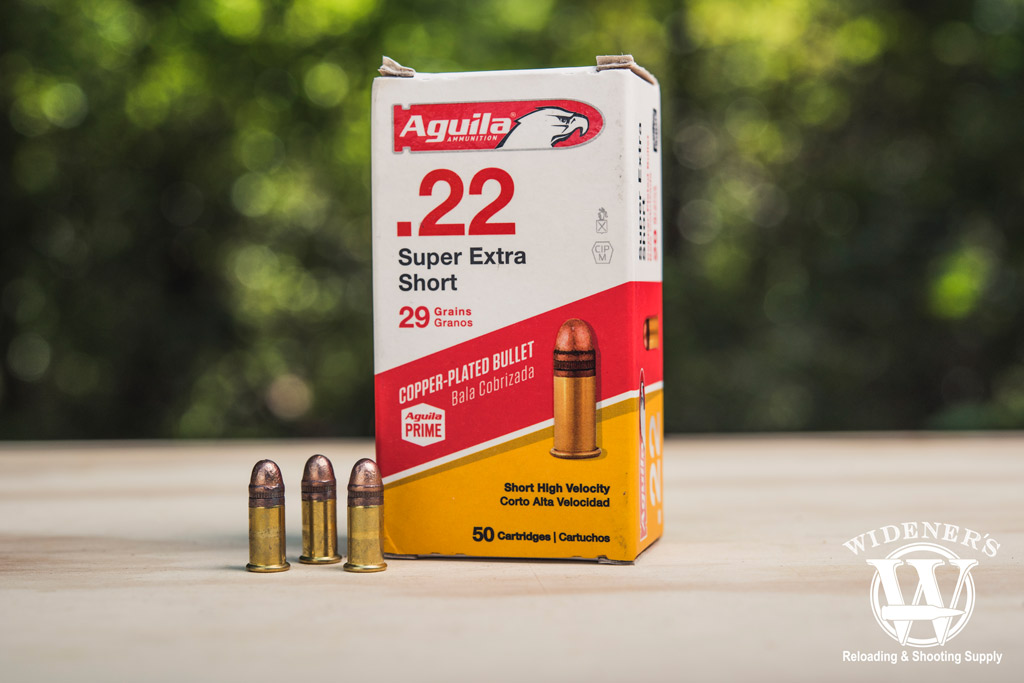
The copper-plated .22 Short bullet is a do-it-all option for rimfire-chambered firearms.
Copper-plated round nose bullets come in the garden variety 29-grain size and are a solid all-around plinking and target round (not match shooting, mind you). If you need to tag rabbits or squirrels in your tomatoes, fire away and mind the produce. A good-performing short round, it is well suited as a jack of all trades. It’s also not a bad option for training young shooters.
Hollow Point (HP, CPHP)
The HP is the best-suited of the lot for small-game hunting and varmint control. CCI’s 27-grain HP is a dedicated varmint round pushing out of the muzzle at a respectable 1,105 fps and measuring 73 ft-lbs. of energy. The copper-plated hollow point serves the same lubricating function to reduce fouling between the bullet and barrel.
The numbers of this spicy short are not that different from .22 LR at the muzzle. At any measurable distance, the numbers drop off fairly quickly. The HP depends on the highest velocity possible to expand and also needs to carry maximum energy to deliver a deadly blow.
.22 Short Quick Answer Box:
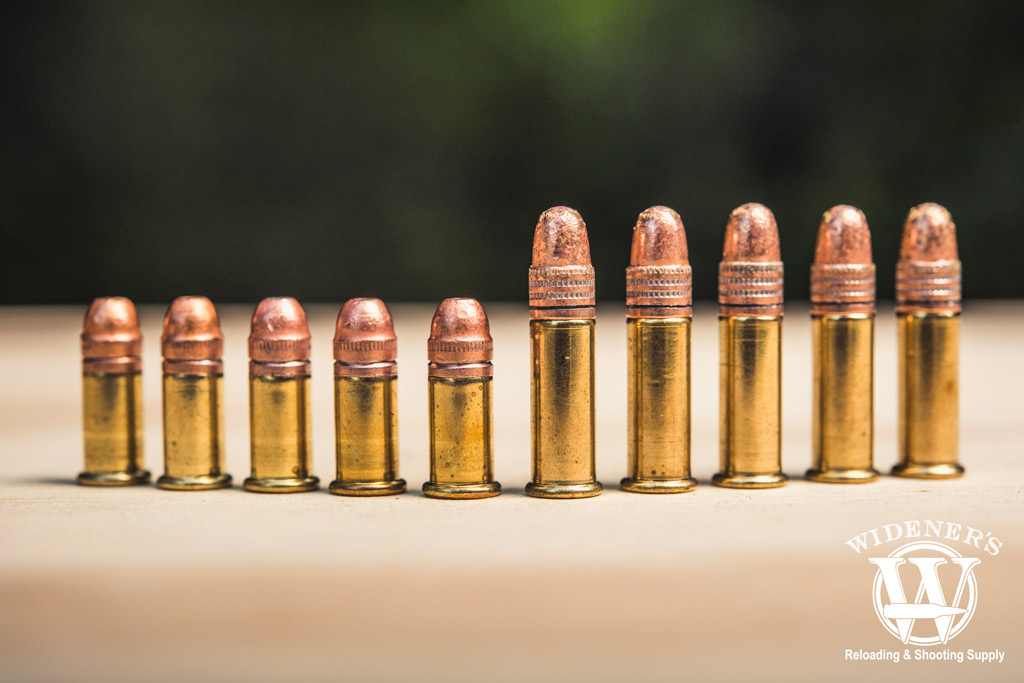
The .22 Short bullet (Left) is shown next to the .22 LR bullet (Right).
• How Big Is A .22 Short Bullet? The .22 Short bullet has a case length of .421 inches and an overall length of .695 inches. It shares the same neck, base and rim dimensions as the more popular .22 LR bullet. The .22 short bullet is .395 inches shorter than the .22 LR. It’s about three-quarters of the size of the .22 LR bullet.
• What’s The Difference: 22LR VS 22 Short? .22 Short and .22 LR are both classified as rimfire cartridges. The .22 Short is an older cartridge than the .22 LR. It’s also smaller in size and has lower velocity and recoil when fired. The bullet weight of the .22 Short is less than that of the .22 LR. The most popular bullet weight for .22 Short is between 27-29 grains.
• Can A 22 Short Be Fired From A 22LR Chambered Gun? The .22 Short cartridge can be fired from certain pistols and rifles chambered for 22 LR. When in doubt, contact the manufacturer. It should be noted that shooting .22 Short ammo in a gun chambered for 22LR can cause excessive fouling. It leaves behind a ring of lead residue that can lead to slow extraction and cause chambering issues.
A good alternative to firing .22 Short ammo in a 22 LR gun is to shoot the .22 Long cartridge. It has a similar performance to the .22 short cartridge without the need for additional cleaning.
A Short History

History Lesson: The .22 Short rimfire is the original metallic American cartridge.
Developed in 1857 and still in relatively wide use and readily available, the .22 Short ammunition still enjoys a cult following. It is well suited for certain particular low-power duties. .22 Short ammunition was designed using black powder and for use in a small revolver. The very first revolver for a great manufacturer who would go on to perfect small revolvers: Smith & Wesson. The original S&W Model 1 was a compact little 7-shot, single-action revolver favored by poker players and the like. It was very popular since metal cartridges, regardless of size, were much more reliable than cap-and-ball revolvers of any variety which performed terribly in wet weather.
While undersized by all modern standards, these were a breaking innovation. Especially for those who use such things routinely and for the arms market as a whole. It marked the greatest breakthrough in ordinance since firearms began replacing archery.
Though originally designed as a self-defense cartridge, it has been usurped from that role many times over. Far more capable centerfire calibers like 9x19mm are far better suited for such a role. It is now used primarily for short-distance target practice where overshooting is a concern, as well as noise constraints as a rifle shooting .22 Shorts, is very quiet. Until 2004, the .22 Short was the designated caliber for the 25-meter rapid-fire pistol event at the Olympics.
Legacy: Best 22 Short Ammo
While nowhere near the popularity of the .22 LR, the .22 Short still serves a purpose (more than one, actually). It has somewhat of a cult following. You can find rifles, and pistols chambered for it going back more than 100 years. Originally designed as a self-defense cartridge, if you can believe that, it was the caliber designed for the original S&W Model 1 revolver, and as mentioned, the first cartridge to use a metallic case.
There is not much variation in bullet weights in .22 Short ammunition. There honestly isn’t much ballistic wiggle room with a cartridge that small. If you go any heavier, there isn’t enough case to pack any more powder. If you go any lighter in bullet weight, it won’t stay on target. Any breath of air will send it wild at a distance.
The heavier LRN bullets are suitable for target shooting. They are best used at specified (fixed) distances as you’d expect in a match. The copper-plated hollow point is much faster and is intended to kill small pests without making a lot of noise in the process. The CPRN falls somewhere in the middle in terms of velocity vice accuracy. Not offering match-grade performance, it also does not have the ballistics of the HP round. It is however cleaner shooting than the LRN. This tiny round is at home when shooting paper, but will rise to the occasion for varmints should it be asked to.


